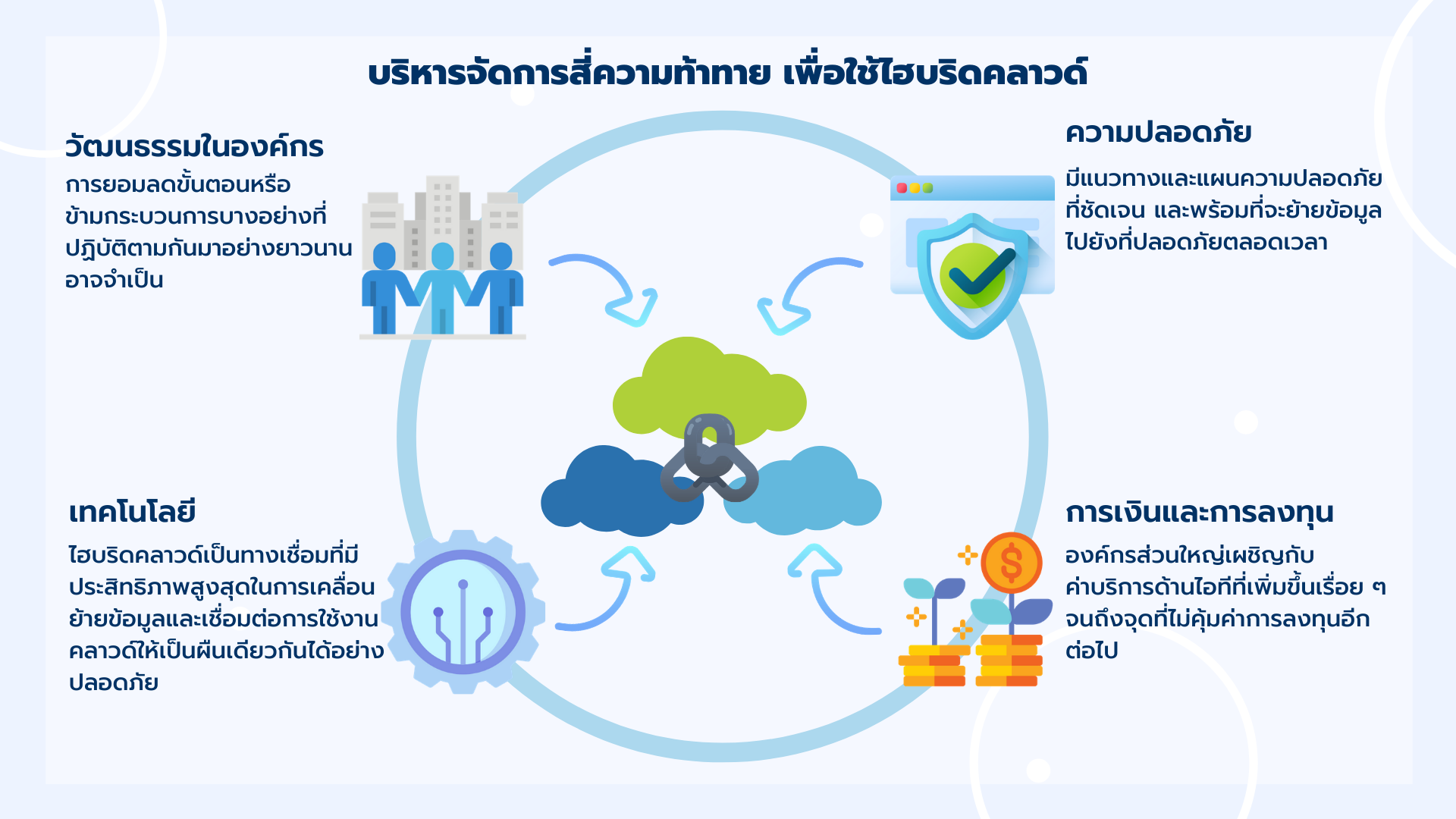Culture, security, technology and finance are the key challenges healthcare IT leaders need to manage effectively.
Article by Thawipong Anotaisinthawee, country manager, Nutanix (Thailand)
The primary goal of any hospital or healthcare provider is their patients’ health and wellbeing. When it comes to embracing new technologies, it’s more about improving patient care, services and experiences that help them recover than deploying cutting edge solutions or cost reduction, but an effective IT ecosystem should be able to do both.
Nutanix Enterprise Cloud Index 2021 survey revealed that 76% of Thai respondents agreed strongly that hybrid cloud was an ideal solution, and 82% said that the COVID-19 has caused IT to be viewed more strategically within their organizations. Respondents around the globe agreed COVID-19 has accelerated digital transformation that is likely to shape the future of healthcare.
External pressuresThe Thai public health sector faces the dual problems of the COVID-19 outbreak in Thailand, and a rising number of elderly people. The Ministry of Public Health reports that in 2021, Thailand will experience an increase of 20% in the number of 60-year-olds (defined as the ‘ageing society’). The National Statistical Office estimates Thailand will become a full-fledged ageing society in 2022. The government has already set the ageing society as a national agenda item and healthcare providers are preparing accordingly.
It could be said the impetus of the COVID-19 has required significant internal and external changes in working practices by public health organizations, such as managing remote working by staff. In addition to the pressures put onto the Thai public health sector by the COVID-19 outbreak, the pandemic has been a catalyst for change for the Thai public health organizations. IT decision-makers must carefully weigh the impacts and benefits of implementing new technologies.
The path to transitionCheryl Rodenfels, CTO of Americas Healthcare at Nutanix, identified four areas that will help healthcare IT leaders transition to hybrid cloud:
- Culture,
- Security,
- IT Modernization Challenges and
- Cost
Culture: In terms of culture, nothing gets done inside large organizations without ideological buy-in from the top. Breaking cultural barriers is often necessary to create an IT services organization that is adaptable and proactive. Healthcare leaders need to be courageous if the technology is going to be embedded effectively.
Security: In assessing risk, IT teams need to have a clear approach to data security and a plan for mitigating cyberattacks, because patient data is highly sensitive. We all know that electronic healthcare records (EHR) are worth a great deal of money on the black market, so IT managers must protect patient data and be prepared to move it to safe places, such as to an on-premises datacenter. Hybrid cloud is the most efficient path across multiple cloud platforms and securely bridges both clouds into a single fabric.
IT Modernization Challenges: Aside from the cyber security and data security concerns, modernizing legacy applications and systems can pose enormous challenges. A lot of healthcare applications are not designed for the cloud, so healthcare providers need to develop their apps in the cloud or re-platform them. Healthcare providers realize their technology systems must be resilient, scalable, quickly adaptable to support remote working, and rely on cloud computing. We have seen an increasing number of IT deployments in the Thai public health services systems such as managing medical records and application developments like the Centre for COVID-19 Situation Administration (CCSA)’s central application or ThaiChana app.
Eye on Cost: This is the final consideration on the path to the cloud for healthcare organizations and hospitals. With the pandemic driving accelerated digital transformations and challenging traditional business models, operating in the cloud is an attractive option, but HIT leaders need to keep an eye on their operating costs, as unmanaged or poorly managed cloud can creep in.
Everybody’s driving down their operating costs. No one wants to drive them up, which is what has happened with a lot of the cloud technology. That’s why a hybrid cloud system’s ability to manage costs across private and public clouds is so appealing.
Case StudyThailand already has success stories that demonstrate how technology is helping the healthcare providers win the battles and transform the sector.
Songklanagarind Hospital, a medical, educational and research hub supporting 14 provinces in the south of Thailand, has deployed cutting-edge technology to improve service performance. With Nutanix’ hyperconverged infrastructure platform, the hospital has been able to implement new systems rapidly, flexibly and smoothly. During the COVID-19 outbreak, some medical personnel have had to work remotely and others might have been quarantined. Nevertheless, personnel have been able to access the hospital internal systems through Nutanix’ VDI by using their own devices to take care of patients with familiarity, convenience and security.
Amid the second wave of the outbreak, Thailand, like other countries, has pinned its hope on the COVID vaccine. When programme rolls out, Songklanagarind Hospital will be able to support national vaccine distribution.
At present, Songklanagarind Hospital has mainly deployed Nutanix’ private cloud which is ideal for multiple services with huge data and transactions that require speed, flexibility, and security. In the meantime, a public cloud is appropriate for health data exchanging such as HIE (Hospital Information Exchange) systems etc. While the hospital continues to deploy the private cloud for its key functions, it is looking at trialling a hybrid cloud system in the next 3-5 years.
Technology should always be about making things better for people, and there are few areas where it can have more meaningful impact than healthcare. While invisible, the hybrid cloud will serve as the basis of better service, and ultimately better health.
Source: FAQ Co., Ltd.

